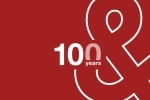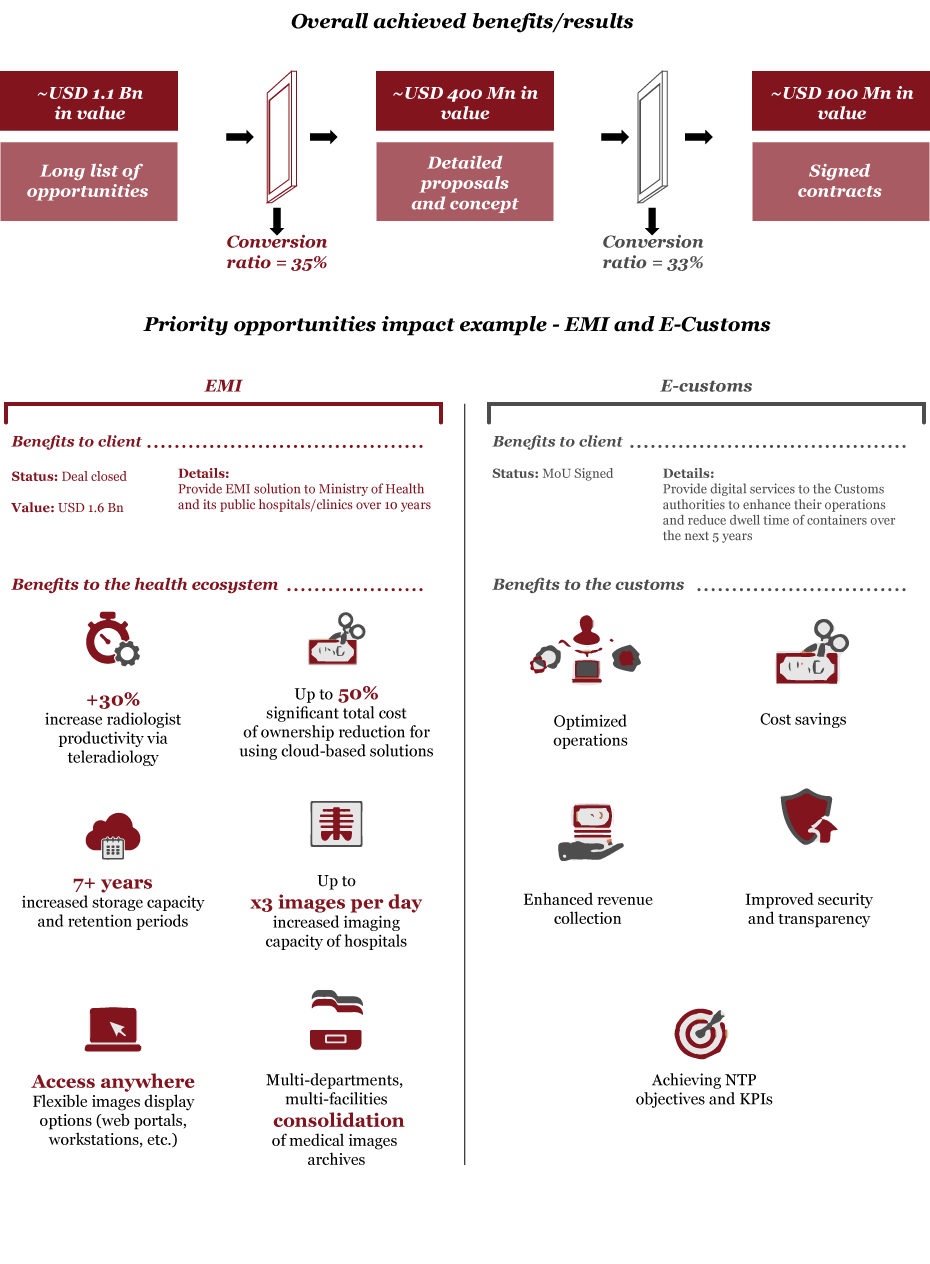Supporting a key telecom operator in developing its ICT capabilities
The situation
Our client, an incumbent telecom operator in the MENA region, was facing slow growth in revenues from traditional telecom products and services and needed to expand its portfolio to meet its ambitious targets. Additionally, a National Transformation Program was introduced by the government that aimed at modernizing and improving efficiency across sectors, which put pressure on the client to develop quickly its ICT capabilities to serve the national agenda.
The client had three main objectives:
- Boost revenues by diversifying the portfolio beyond traditional products and services, targeting key accounts and mega projects with high revenue potential
- Maintain positioning as the leader among operators in the country and in the region by developing advanced ICT capabilities
- Serve the national agenda by building the necessary ICT capabilities to enable key ICT/ digitization initiatives
How we helped
We identified global ICT trends and best practices across industries, benchmarked global telecom operators and IT providers that are leaders in vertical services, and analyzed the local market in terms of key players, size, market opportunities (mainly the National Transformation program), and challenges. Eventually, we identified a long list of potential opportunities by industry that our client could pitch to public and private entities. For key accounts, we identified relevant opportunities to be conceptualized.
We prioritized the long list of opportunities based on complexity, opportunity size, strategic fit, and client relationship. For the prioritized list, we developed the concept, value proposition, and business case for top-priority opportunities including solution description, market maturity, technology architecture, benefits, and benchmarks, business model options, and go-to-market strategy.
The deep dives included e-Health solutions, National EMI, e-Customs, Blockchain, Crowd Donations, and Smart Cities.
Case Study 1: National Enterprise Medical Imaging
e-Health development was facing multiple challenges in the market, particularly regarding medical imaging:
- The market was lacking radiologists, with supply a meager 15 percent to 25 percent of demand
- Heavy investment was needed to install on-premises imaging solutions with the increased storage space demanded by new imaging technologies
- Imaging solutions were vendor-specific
- Images were displayed only through clinical work stations
- There was no consolidation of medical images history and no archiving across medical facilities
To help address medical imaging challenges, we helped the client develop the concept of a national cloud EMI solution that consists of a centralized national medical imaging database that hospitals, clinics, and primary healthcare centers can use to upload and access all patient medical images in an easy and cost-effective way through a user-friendly interface.
Case Study 2: e-Customs
Customs was a top priority on the national agenda. The country’s customs authority was operating in a traditional way with mostly paper-based processes, due to basic systems. Inspections were time-consuming with limited coordination among agencies and limited integration and communication. The average dwell time was two to three times slower than international benchmarks.
We developed the concept of an e-Customs solution that will digitize and centralize the different processes and modules of the customs authority across agencies and relevant departments, including declarations management, item classification, risk management, valuation, revenue collection, etc.
Results
Overall project
As a result of our efforts, the client was able to tackle opportunities in a more efficient way to keep up with evolving market dynamics. The overall pipeline value was estimated at roughly US$1.1 billion.
The “idea to proposal” conversion ratio was 35 percent. In total, we detailed the concept for more than 100 opportunities across 13 verticals with a value of $370 million. A 911 Emergency Response, connected cars, airport digitization, safe cities, agriculture and water digitization, and crowd donations are just a few examples.
Multiple memoranda of understanding were signed with public and private entities, including the Ministry of Health and the Statistics Bureau. In fact, 33 percent of proposals were converted to signed contracts with an estimated value of $100 million.
Case study 1: National Enterprise Medical Imaging
A memorandum of understanding was signed with the Ministry of Health to collaborate on and deliver e-Health products and services. A $1.6 billion, 10-year deal to implement an enterprise medical imaging solution for the Ministry of Health was closed. A second deal was signed with the MoH to provide managed services solutions to more than 2,000 primary healthcare centers.
Key benefits to the health ecosystem in the country will be achieved, including a 30 percent increase in radiologists’ productivity, a 50 percent reduction in cost of ownership, a three-fold increase in the capacity of hospitals, and consolidation of all medical records.
Case study 2: e-Customs
We reached advanced negotiation stages for a holistic e-Customs solution that resulted in signing a memorandum of understanding between our client and the customs authority.
The solution will result in optimized operations (including reduced dwell time of containers), cost savings, enhanced revenue collection, and improved security and transparency for customs. At the national level, the transformation program objectives and KPIs will be met.



















Menu